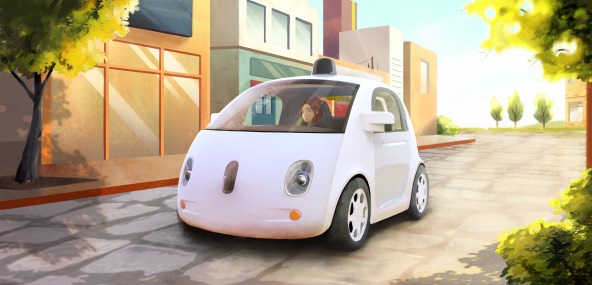Google Self-Driving Cars Involved In Eleven Accidents

Prototype vehicles have been in only a handful of accidents in six years and over a million miles of testing, Google reveals
It seems the dream of self-driving cars may still be a little while off – mainly due to the risk of other (human-driven) vehicles on the road, according to the latest reports from Google’s autonomous driving project.
The search giant has revealed that its prototype vehicles have been involved in 11 accidents over the last six years – however, all of these were the result of errors by other (human) drivers.
This comes with the testing team having travelled over 1.7 million miles in a fleet of more than 20 vehicles, Google project manager Chris Urmson revealed.
 Crash bang wallop
Crash bang wallop
“…Not once was the self-driving car the cause of the accident,” Urmson wrote in a Medium blog post detailing the team’s experiences. Happily, no one was injured in the accidents, with Urmson saying that the consequences of the 11 accidents were only ‘light damage, no injuries’.
“If you spend enough time on the road, accidents will happen whether you’re in a car or a self-driving car,” he added.
The most common cause of accidents was being hit from behind, (seven incidents) which happened mainly at traffic lights but also on the freeway, Umrson revealed.
But the Google cars, which first launched back in 2009, had also been side-swiped a couple of times and hit by a car rolling through a stop sign.
Urmson revealed that the cars were hit 8 times in many fewer miles of city driving than driving on freeways, and the data had helped the team build up a picture of the risks involved in driving in both environments.
“We’ll continue to drive thousands of miles so we can all better understand the all-too common incidents that cause many of us to dislike day-to-day driving – and we’ll continue to work hard on developing a self-driving car that can shoulder this burden for us,” Urmson said.
Having worked with several manufacturers on early concepts, Google unveiled its own brand of driverless cars in May 2014.
The vehicle has no steering wheel or pedals, but it does have a stop and go button. A YouTube video reveals that the prototype car is a cute looking two-seater city vehicle, similar in size to that of Smart cars made by Daimler AG.
According to Google, its car comes with an onboard screen to display the route and boasts a top speed of 25mph (40km/h) thanks to an onboard electric motor. It is also equipped with an array of sensors mounted on the roof to allow the car’s computer to determine its location and surroundings.
The sensors can also apparently “see” several hundred metres ahead, and even 360 degrees around its location to remove any blind spots.
This type of technology would allow the car to be summoned with a smartphone application. The car would then collect a passenger and automatically drive them to a chosen location.
What do you know about transport technology? Try our quiz!
 Crash bang wallop
Crash bang wallop